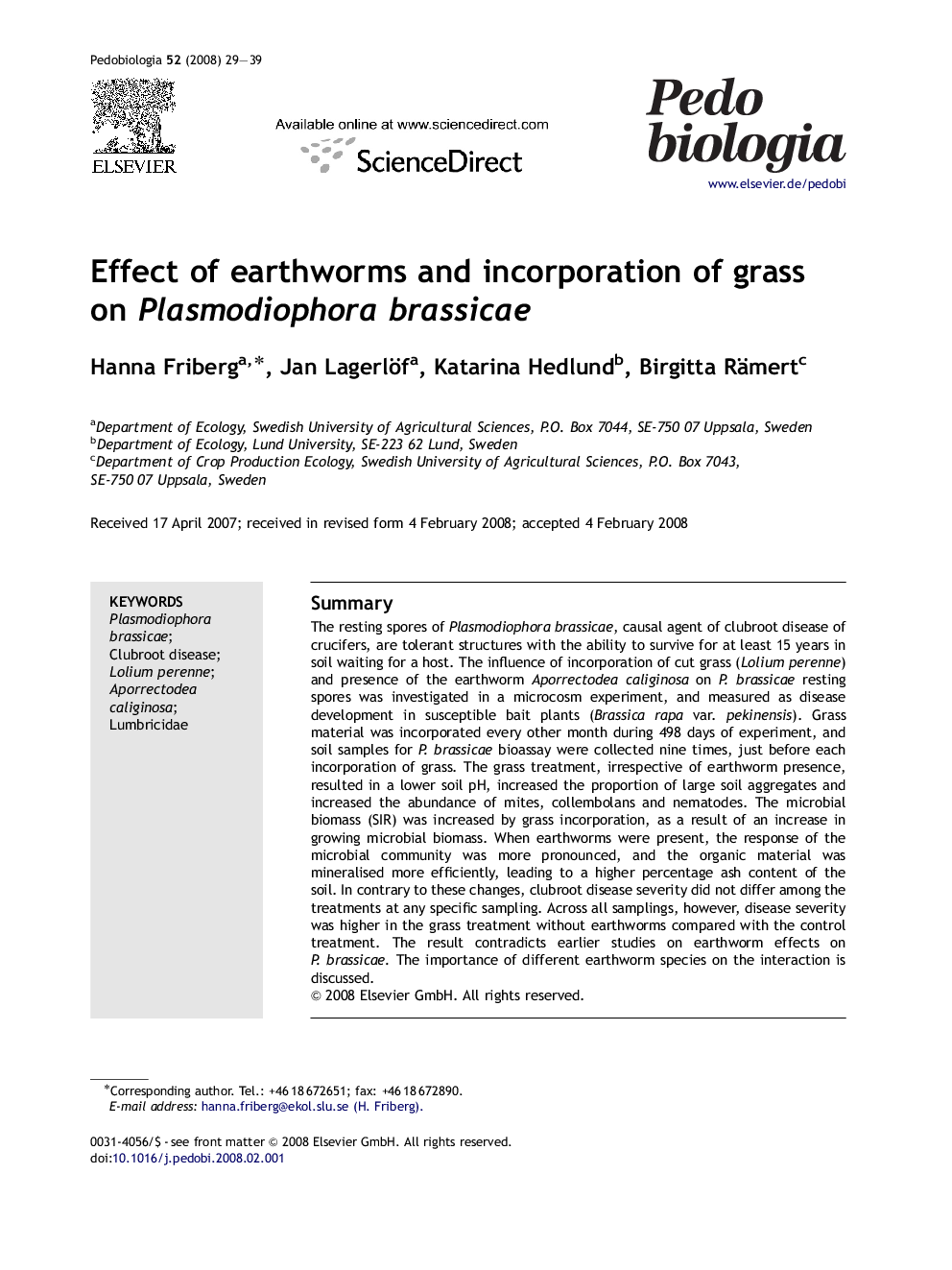| Article ID | Journal | Published Year | Pages | File Type |
|---|---|---|---|---|
| 2061532 | Pedobiologia | 2008 | 11 Pages |
SummaryThe resting spores of Plasmodiophora brassicae, causal agent of clubroot disease of crucifers, are tolerant structures with the ability to survive for at least 15 years in soil waiting for a host. The influence of incorporation of cut grass (Lolium perenne) and presence of the earthworm Aporrectodea caliginosa on P. brassicae resting spores was investigated in a microcosm experiment, and measured as disease development in susceptible bait plants (Brassica rapa var. pekinensis). Grass material was incorporated every other month during 498 days of experiment, and soil samples for P. brassicae bioassay were collected nine times, just before each incorporation of grass. The grass treatment, irrespective of earthworm presence, resulted in a lower soil pH, increased the proportion of large soil aggregates and increased the abundance of mites, collembolans and nematodes. The microbial biomass (SIR) was increased by grass incorporation, as a result of an increase in growing microbial biomass. When earthworms were present, the response of the microbial community was more pronounced, and the organic material was mineralised more efficiently, leading to a higher percentage ash content of the soil. In contrary to these changes, clubroot disease severity did not differ among the treatments at any specific sampling. Across all samplings, however, disease severity was higher in the grass treatment without earthworms compared with the control treatment. The result contradicts earlier studies on earthworm effects on P. brassicae. The importance of different earthworm species on the interaction is discussed.
